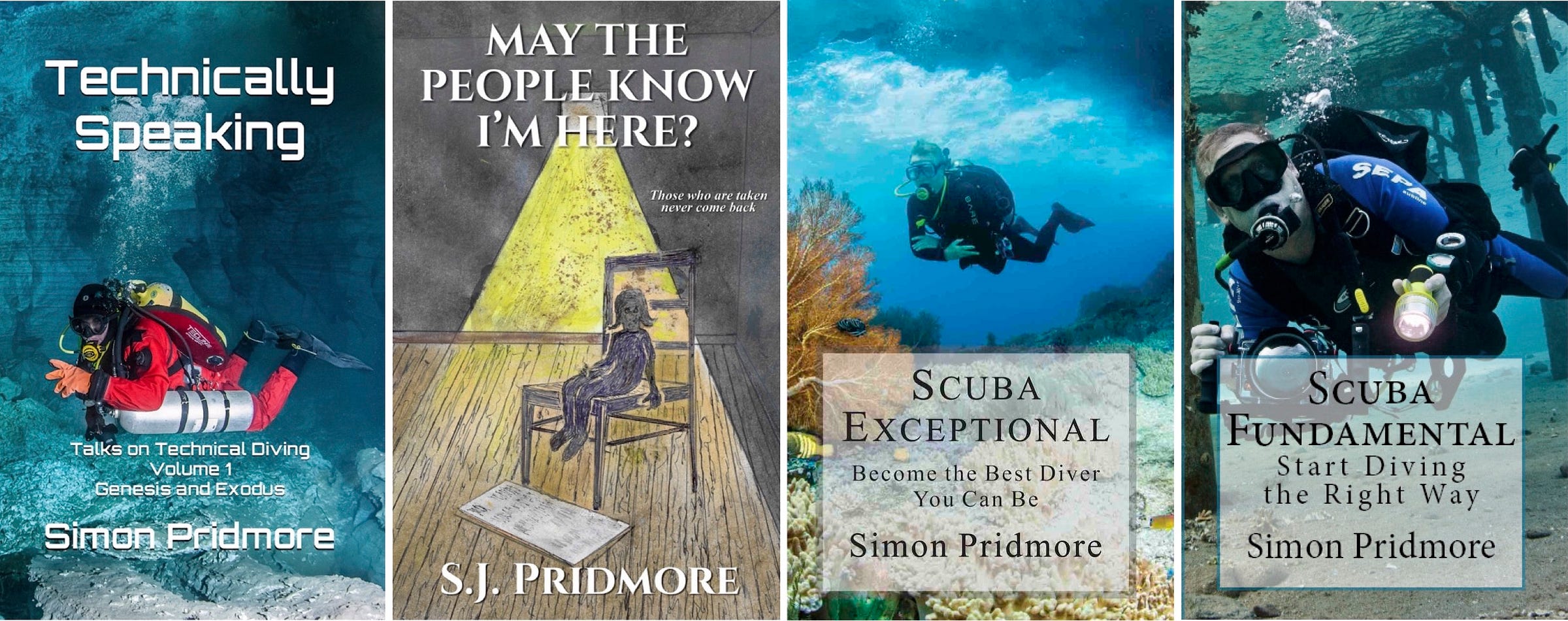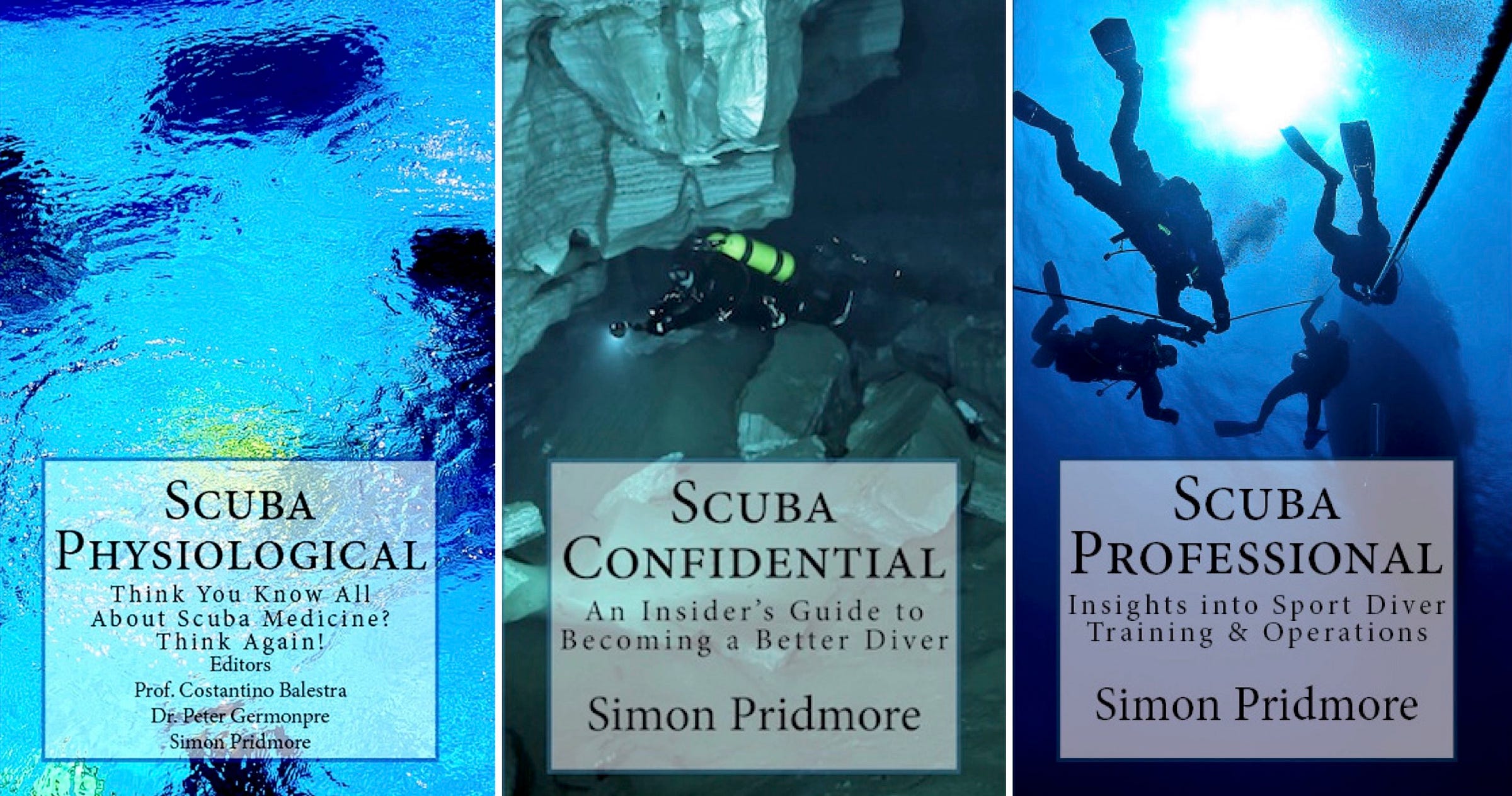Scuba Conversational - Episode #66: Magnificent Indonesia
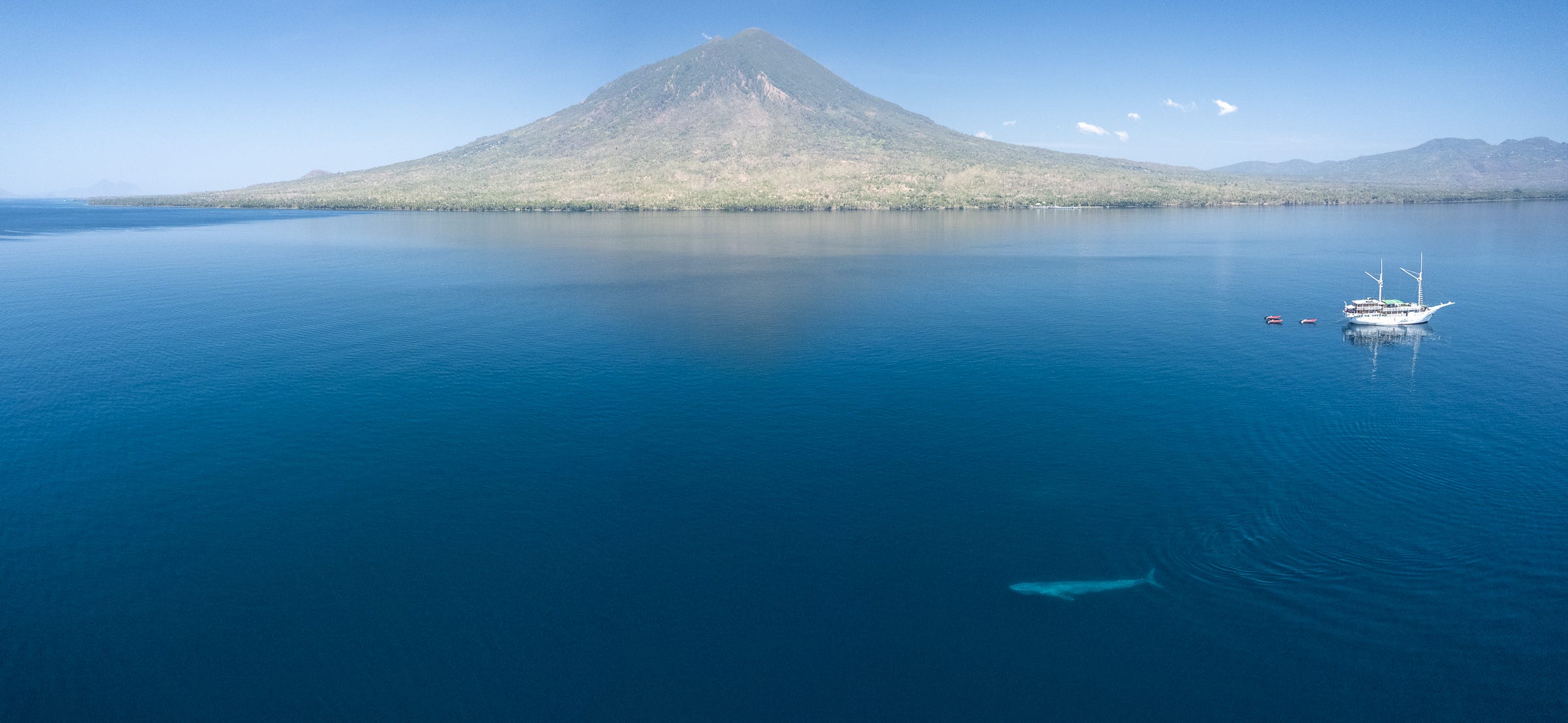
This 66th (66th!!!) episode of Scuba Conversational covers a wide variety of themes, all relating to scuba diving in Indonesia, the vast island nation that used to be our home and that we still visit for several weeks a year, leading trips to some of the most wonderful diving locations in this astonishing archipelago.
The best diving in the world?
We think so.
Eastern Indonesia
The best of the best can be found in sparsely populated eastern Indonesia. With one or two honourable exceptions - Triton Bay Divers is an excellent example of an outstanding land-based resort in a prime location - the best way to gain access to the most remote, little-dived and unspoilt sites in this region is to join a dive liveaboard.
Pindito
Today, there are many liveaboard vessels in eastern Indonesia, but back in the early 1990s, there was only one, the Pindito (pictured above and below). She was built in Kalimantan in 1991-92 by former tour guide Edi Frommenwiler, who was following a dream to do something that nobody had done. Once he had finished constructing his dream dive boat, he sailed off to the Banda Sea and beyond, hoping that, as he had built it, they would come.
And they did.
The Pindito became a template that many would follow, but it was Edi and his team who found and named the dive sites first; they even named a mountain. And they are still cruising the eastern seas, discovering new places to dive, offering new experiences and sharing their knowledge with new generations of divers.
Here are a few shots of how it all started, courtesy of the Pindito website. I’ve also added a couple of recent pictures. As you’ll see, she is still one of the best-looking and well-equipped boats on the ocean, thanks to several upgrades, regular refurbishing and a lot of TLC over the years.
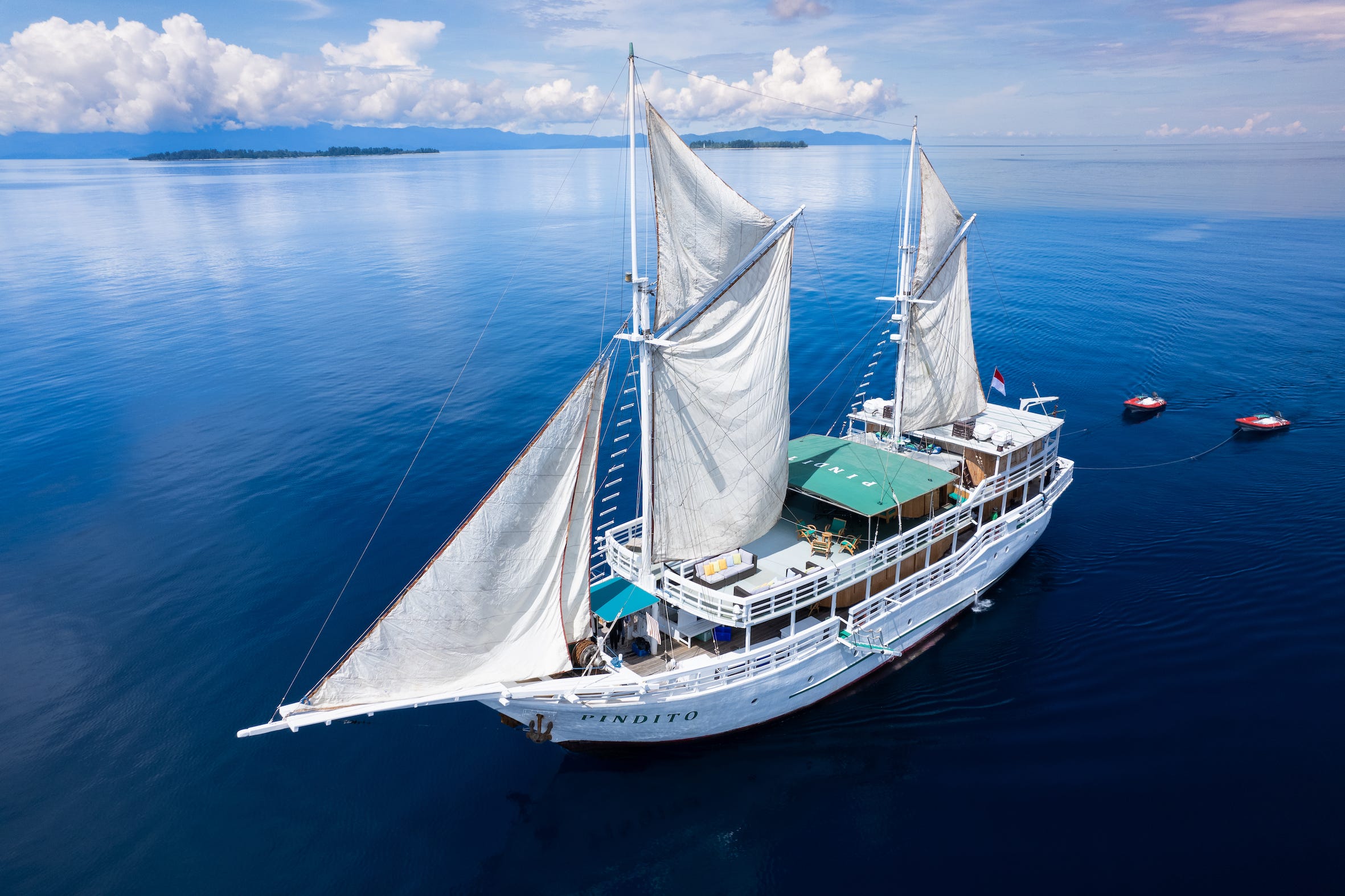
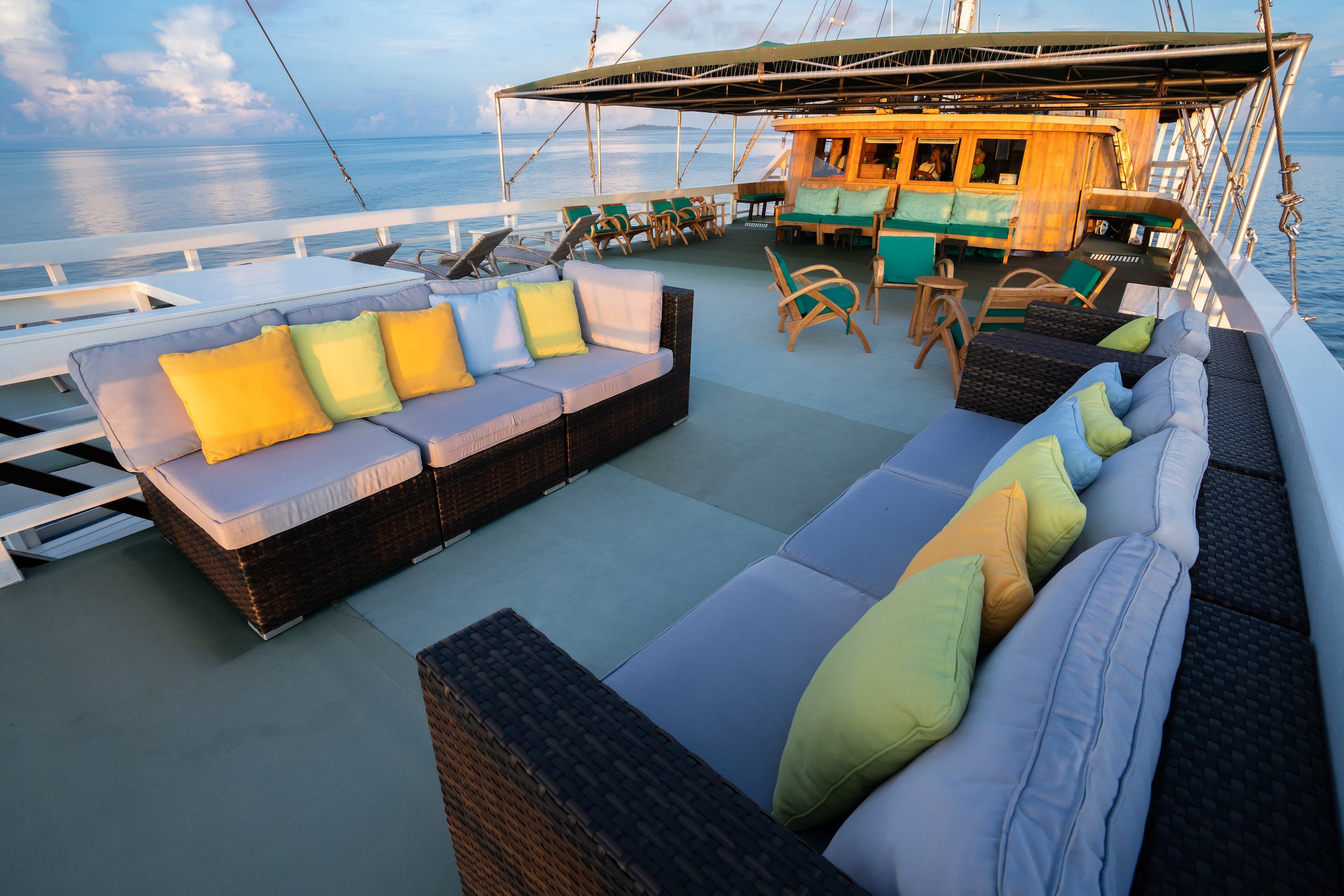
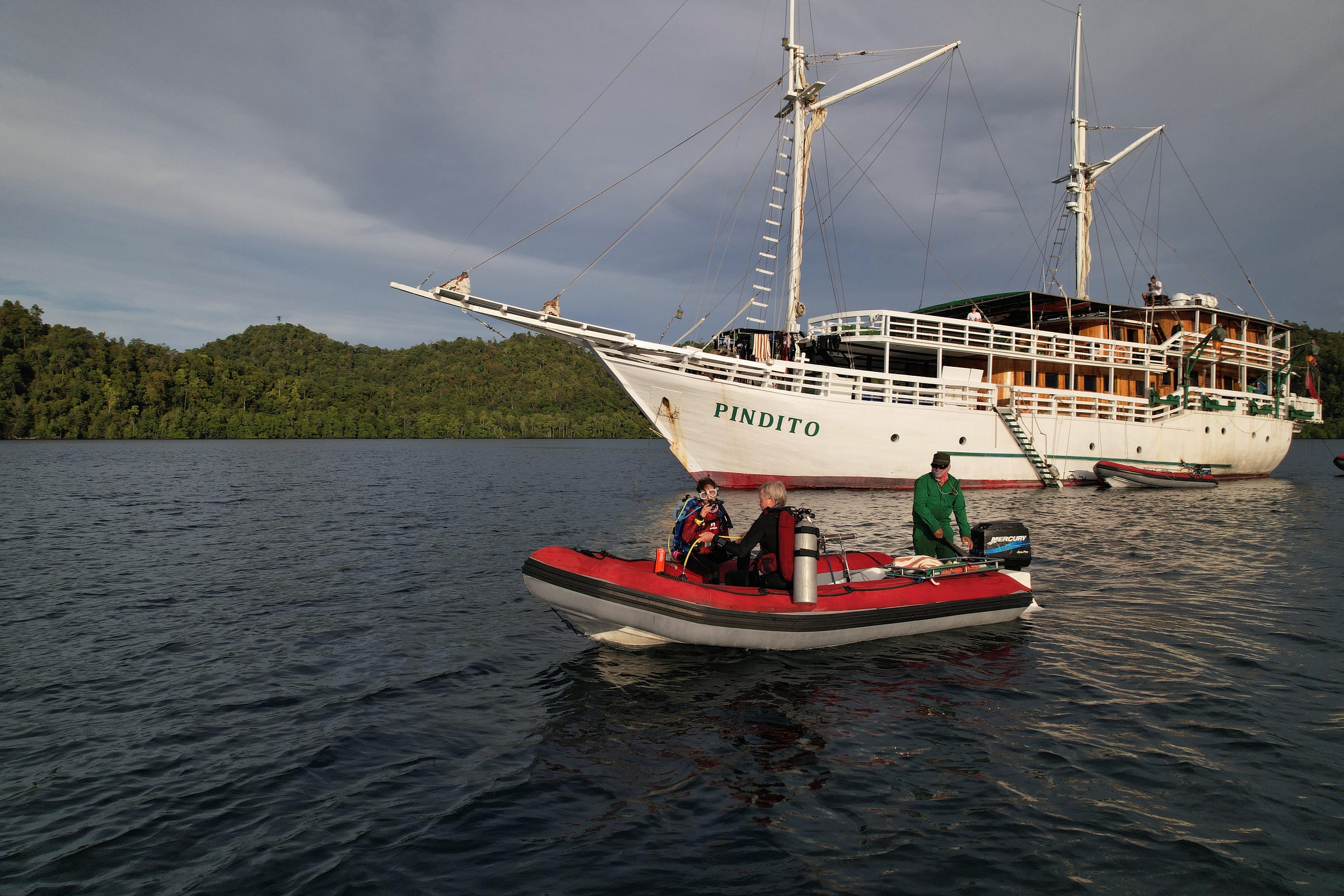
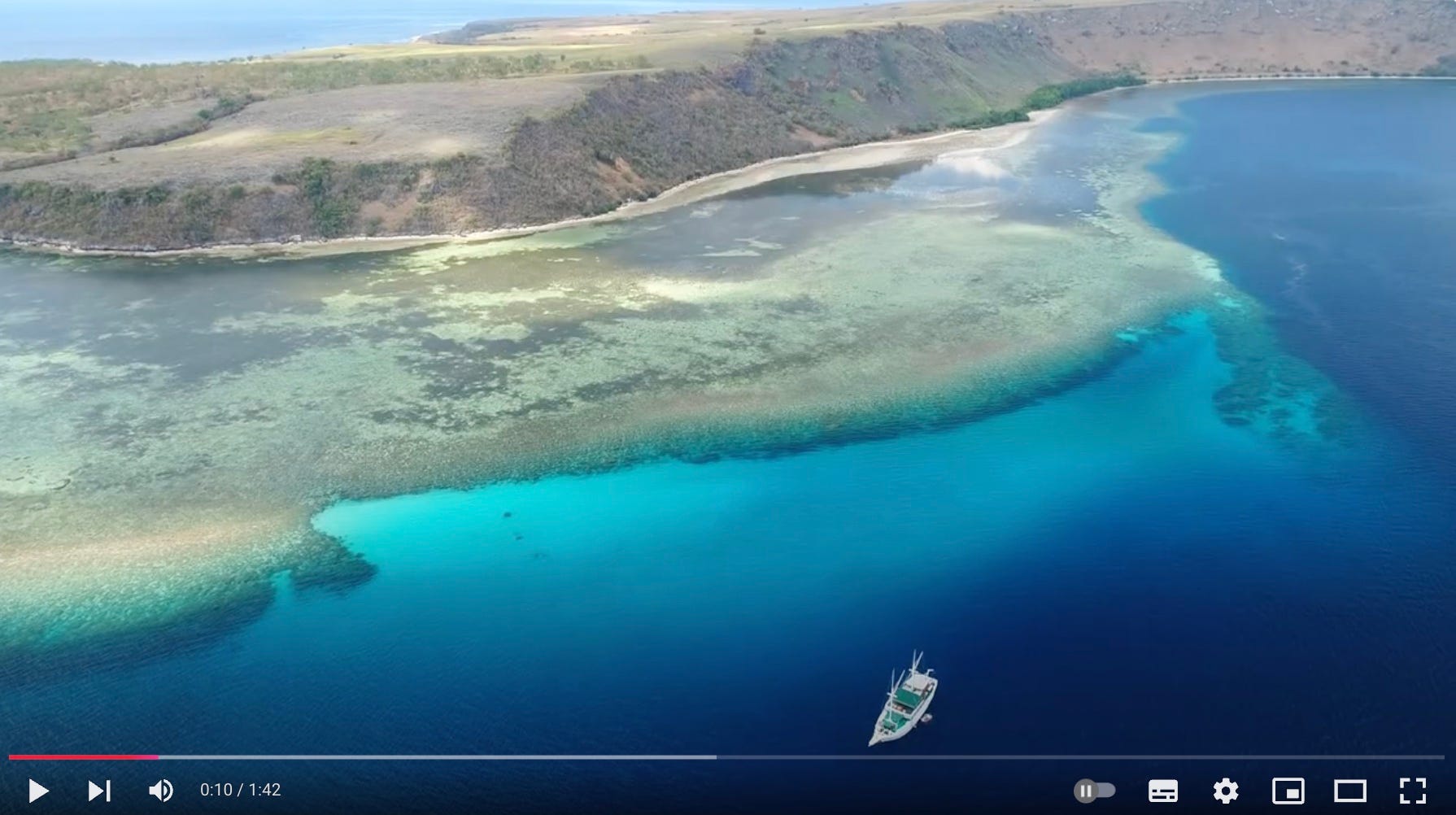
Fak-Fak
I mentioned that the Pindito is still exploring. Early last year, Tim Rock and I learned that she had devoted a few weeks to looking for new dive sites around the Fak-Fak (so good they named it twice) peninsula in West Papua - see map below. This is a region we have travelled through many times en route between the wonderful dive sites to the north in Raja Ampat (top right of the map, the islands of Misool, Salawati, Batanta, Waigeo and satellites) and the spectacular explosion of life in the Triton Bay delta (at the bottom of the map).
We had always wondered what the diving around Fak-fak was like. We had only ever dived in two or three spots, and it seemed very promising.
The Pindito folk had evidently been wondering about that too.
As soon as we saw that they had been there and had immediately added the area to their 2025 schedule, suggesting that they had found some well-worthwhile sites, we chartered the Pindito for two back-to-back cruises from Sorong to Triton Bay and back via two or three days in Fak Fak and will be spending the best part of a month there next Spring.
I’ll be sure to report back in Scuba Conversational next summer, so watch this space.
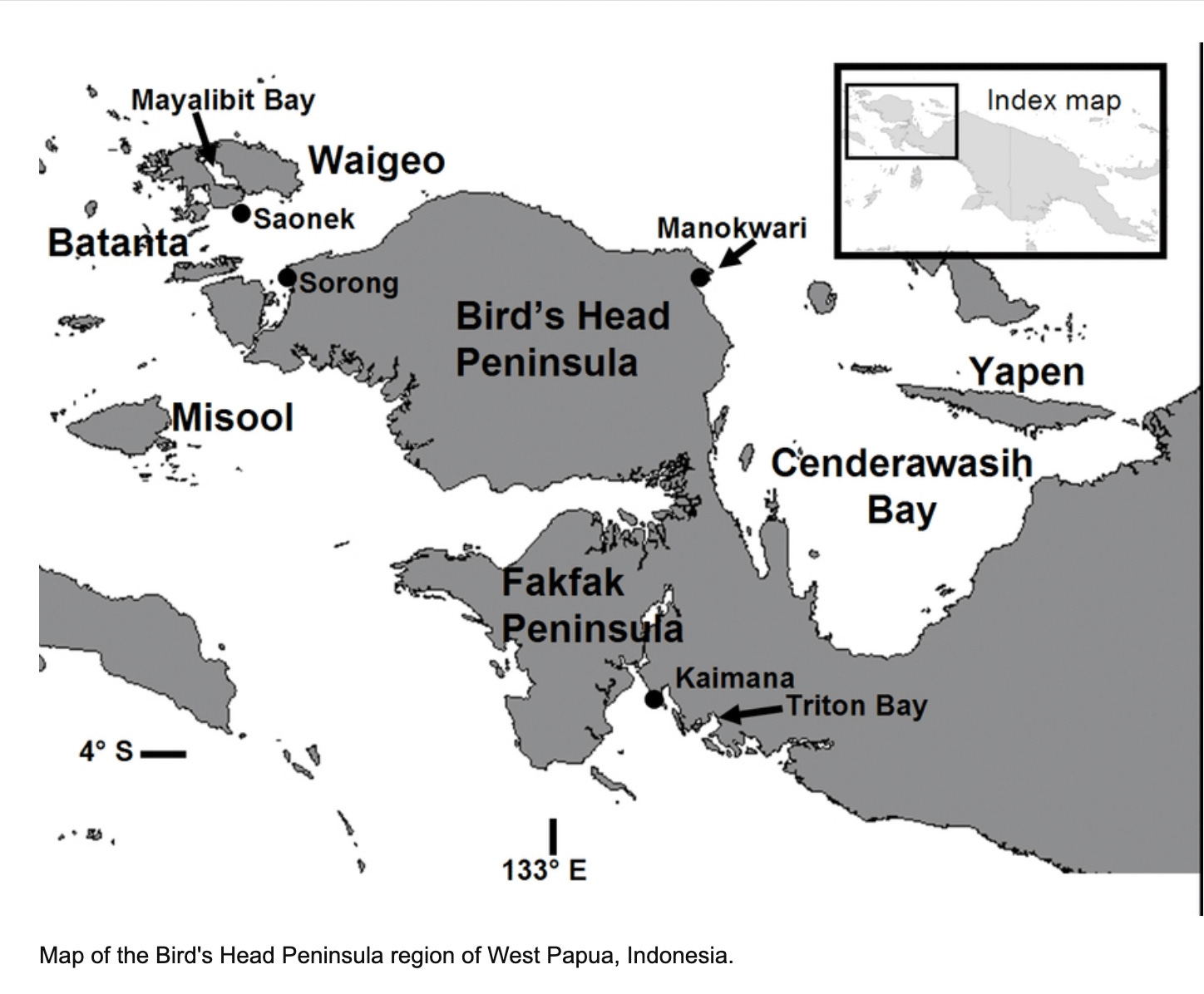
I should also add a wider map to give you a clearer idea of exactly where I’m talking about. The red dot marks Sorong. If you envisage the enormous island of Papua as a crouched bird with a long neck (like a vulture, maybe) facing left, then you can see why they call it the region the Bird’s Head Peninsula.
If you can’t wait and want to find out more right now, there is an excellent website dedicated to the Birds Head Seascape, where you can immerse yourself in this astonishing part of the world. The site is a labour of love by a group of researchers, divers and conservationists, including pioneers Burt Jones and Maureen Shimlock.
Burt was part of the team on Pindito’s Fak-Fak exploration trips and he wrote an excellent article about the experience for Alert Diver magazine. You can download the piece here, or just click on the image below.
Of course, these Spring 2025 trips will mean that sometime next year, Tim and I will have to update our current Raja Ampat & Northeast Indonesia dive guide, which covers the Birds Head Peninsula, among other fabulous northeastern Indonesia destinations, such as Halmahera and Biak.
The Alor Archipelago
Then, for the summer of 2026, we have chartered the Pindito again, but this time to explore the Alor Archipelago, which extends along the south of the Banda Sea. We have spent time here before, about 15 years ago and again last year, but, over the years we have noticed Pindito exploring some parts of the archipelago that are new to us and we are keen to see what they have found. Like West Papua, it is quite an extraordinary place.
This map gives you an idea of where it is - see Darwin, northern Australia in the lower right-hand corner. We will be departing out of Maumere on Flores Island and travelling east.
And here’s a closer look at the diving area.
To give you a flavour of the diving, here are a couple of extracts from notes made on a previous Alor trip.
“We wake the next morning to find the boat almost becalmed by a fierce current opposing our transition north through the Boling Strait between Adonara and Kawula/Lembata, (the island with two names.) The Boling volcano dominates the skyline to the west and ahead of us to the northeast is the imposing, smoking bulk of the Iliwariran volcano that we will visit on day 8.
We dive the bay in front of a fish cold storage facility that gives this site its name, Warung Dingin, (cold shop). Our critter count would not disgrace a day in the Lembeh Straits and includes a pair of scarlet paddleflap rhinopias, wonderpus, black giant frogfish, fingered dragonets, inimicus, robust ghost pipe fish, coconut octopus, squid and cuttlefish. There is a huge variety of weird and wonderful marine life hiding amid the chaotic mix of rubble, sand and coral and the action helps take our minds off the cooler water. Temps are down to 25C (77F) and as we go south over the next couple of days it is likely to get colder. Hoods are shared around and we start layering up!
Everyone is up early again as we anchor off Pura, a large island in the middle of the Pantar Strait between Pantar and Alor. We choose a place on the south side of the island where the reef is carpeted with millions of anemones that extend for acre after acre in an unfeasibly huge colony. As the sun rises, you can see the colours of the anemones in all their glory, clouds of anthias hover above, and fast schools of fusiliers race among the bommies.
This is a gorgeous site and, in one of those brief magical moments that the gods of the sea occasionally bestow on the fortunate, a 2-metre (7ft) thresher shark swings in from the blue and cruises close by before disappearing off again with a flick of its improbably extended tail fin. We are all so impressed by this site that we elect to stay here and do it all over again.
We are on the move throughout the night, covering the 100 km (62 miles) north, then west back to Kawula/Lembata, and as the sun rises, we arrive above a seamount in the bay below the Iliwariran volcano, which is spewing sulphurous clouds into clear blue sky 1500 metres (5000ft) above our heads.
On the seamount, we spot several white tip reef sharks plus a couple of large dog-tooth tuna in the depths and schools of fusiliers, rabbitfish and surgeon fish rampage up and down the slopes.
"The ocean is glassy-flat, and the air is so clear that you can see the triangular profile of the Komba volcano on the horizon to the north, steam churning out from the peak, the island generating its own weather system. Given the wonderful conditions we decide to head out there in the afternoon, dive in the shadow of the volcano, and then hang around to watch the fireworks after dark.
But before that, we dive off the eastern tip of the bay, where a wall covered in a forest of sea fans drops onto a sand patch at the point. The sand slopes down to a deeper wall and this is where we find, even at slack tide, a parade of big animals, black-tip and white-tip reef sharks, fat grey sharks, a Napoleon wrasse, a cruising eagle ray, a big blackjack and a group of four great barracuda who nose around us inquisitively as we hang next to them in the blue. At the beginning of the dive, spotting what looks like a small crevice in the depths, where a section of the reef wall has collapsed, finds instead a vast canyon with a huge school of trevally lurking within.”
So, that is how Alor was then. Can the Pindito crew show us even better Alor diving in 2026?
Well, maybe they can.
Here is what their website claims.
“Over many years, Pindito has uncovered some mysterious marine wonderlands that remain unknown to other liveaboards. Expect to immerse yourself in a diving paradise brimming with vibrant creatures, and with a little luck, you might run into sunfish, hammerhead sharks, humpback whales - even marlin and sailfish. And what about the muck diving? There are many sites here to explore. Got a critter wish list? Start ticking these off here.”
They may be guilty of going overboard (pun entirely intended) in their flowery descriptions and exaggerated adjectives, but this is the sort of thing we want to hear from the people running our ride of choice enthusiasm, ambition and exactly the same priorities we have.
What we are always on the lookout for on our trips are sites that will replace some of the 50 best Indonesia dives that we compiled a few years ago. It’s quite a list!! Three of the best of the best are in Alor. We think we will probably find others
Here’s the list as it stands - or rather, as it stood when we wrote the book.
How many of these sites do you have in your logbook? Let me know and I’ll reveal the winner in the next Scuba Conversational.
This is the book, click to find out more.
The Best 50 Dives in Indonesia
Coral Triangle Centre / Grand Blue Project
Having talked about Edi Frommenwiler’s first dream project/labour of love, I should also mention his second, Grand Blue.
We discovered it when we visited the Coral Triangle Center for Marine Conservation in Sanur earlier this year. It’s in a lovely quiet corner of the village, just off the main through road at Jl. Bet Ngandang II No.88-89.
You get a comprehensive introduction from the staff before they leave you alone to wander around the center.
It’s spacious and the presentations are nicely laid out.
And include images by some outstanding photographers, a few of whom, I notice, are readers of this newsletter!
To find out more about what the Coral Triangle Center does (and it’s a lot!), check out their website. Or, if you are in Bali, stop by. It’s open every day from 9 to 5.
It was at the Coral Triangle Center that we came across The Grand Blue Project
After reading the background, you can then sit at a screen and play with Grand Blue, which is actually an enormous online marine encyclopedia.
I wasn’t sure I’d be able to tear Sofie away.
There’s a project intro on YouTube, or visit the website.
Edi has created this resource for divers and other people who care for the ocean, but his primary focus is on the next generation and he has been working hard to get the project included in school curriculums across Asia.
Earlier this year, he was at the Korean International School in Sai Wan Ho, Hong Kong, and gave the students a demonstration of The Grand Blue Project in the school gym.
It was a packed house, and the audience was rapt and full of questions.
The talk went down well with the pupils and, evidently, the school was impressed too.
Purple Dive Penida
Staying in Bali, or rather heading across the ocean south of Sanur to the island of Nusa Penida, last month saw Purple Dive Penida run a PADI Instructor Development Course (IDC) with a difference. The dive centre is owned by Julia and Hélène and they run several IDCs a year. This time it just so happened that all eight instructor candidates, the course director and the two staff instructors were all women.
Here they are.
Here are a couple of shots from the training course.
And here they are with their instructor certificates in hand, two weeks or so later. A 100% success rate.
The candidates were from France, Germany, Hong Kong, Singapore, the USA and Indonesia and one of the Indonesian instructor trainees, Made, achieved something of a milestone. As Purple Dive Penida announced on their website.
We would like to congratulate Made for becoming a dive instructor during our October IDC! You may remember Made from our fundraising campaign with @daughtersofthedeep. Thanks to generous donors, we achieved our goal to finance her course. Made studied very hard for the past couple of months and succeeded in the PADI Instructor Examination.We are very proud to have been part of her journey in becoming the first female dive instructor from Nusa Penida, and we cannot wait to see what she does next!
Congrats Made!!!
Here is Made in full instructor mode.
Daughters of the Deep was not an organisation that had previously crossed my radar screen, so I looked them up.
I should have heard of them before and I thought you would be interested too.
This is their mission statement.
We are an international charity and community of passionate individuals – rising up against the socioeconomic barriers that restrict access to the education and practical experience needed for women to enter into marine careers.
Our mission is to give young women who have a passion for the ocean the confidence and opportunity to try scuba diving, master the sciences, captain ships and become the lead voices in the fight to save our seas. Every time they hit the water, we want them to feel empowered to achieve what they want out of life.
Purple Dive Penida, along with dive centres and individuals in Europe, Asia, Australia, Africa and America are involved.
This is what Purple Dive Penida does.
Purple Grant
Daughters of the Deep are matching donations from Purple Dive in order to support the Indo Ocean Project to fund the Marine Research Expedition (inc. diving costs and laboratory costs) and support the travel, basic living expenses, research permits and administration fees of chosen candidates to complete independent projects as part of their Bachelor Degrees.
Successful applicants will also receive mentorship and guidance from the Indo Ocean Foundation throughout their research journey, enhancing their skills and knowledge in marine sciences
This initiative not only underscores a joint commitment to empowering women in marine sciences but also highlights the importance of female leadership in driving positive change for our oceans. Through our collective efforts, we aim to inspire more women to pursue careers in marine sciences and make significant contributions to environmental conservation.
Facilitating marine research in remote regions of Indonesia is of paramount importance. These areas often harbor unique and fragile ecosystems that are vital to global biodiversity. By empowering women researchers to study these remote regions, we can gain valuable insights into their ecological significance, threats they face, and effective conservation strategies.
Additionally, conducting research in remote areas allows us to address knowledge gaps and develop targeted conservation initiatives tailored to the specific needs of these ecosystems. This not only benefits local communities and marine life but also contributes to global efforts to protect our oceans for future generations.
This is an outstanding initiative. I will be following its progress and will be sure to let you know more in future Scuba Conversational newsletters.
Carpe Diem Phinisi
I began with a story about Indonesia’s oldest phinisi liveaboard, so I thought I’d close with the story of one of its newest.
This is Carpe Diem.
This is also the story of a dream. We met Cecile a few years ago on a dive liveaboard crossing from Raja Ampat in West Papua to Ambon in Maluku via the Banda Neira island group in the middle of the Banda Sea. It was her first liveaboard trip, and she had taken it because it was the best way to get to see the islands.
A few years later, we heard from Cecile that she had quit her job and, together with former colleague Brian as her business partner, had bought a boutique liveaboard called Carpe Diem.
As the front page of their website proclaims :
“Twenty years from now you will be more disappointed by the things that you didn’t do than the ones that you did do.
So throw off the bowlines.
Sail away from safe harbour.
Catch the trade winds in your sails.
EXPLORE. DREAM. DISCOVER
This is the quote, and the philosophy, that has led us to being the proud owners of the Carpe Diem Phinisi.
This beautiful boat represents the fulfilment of long-held dreams and the promise of great adventures to come.
We would be honoured if you would join us on our journey.”
Sentiments that we recognise all too well.
So we did join them. We put a small group together - the boat caters to eight divers in four cabins - and joined Cecile, Carpe Diem and head dive guide Agus, who is an old friend, for a trip across the south of the Banda Sea, visiting islands where few have ever dived, exploring.
Since then, we have travelled through virtually the whole of Raja Ampat together, and our next adventure will be to visit the rarely-visited outer atolls off the east coast of Indonesian Borneo in the summer of 2026.
We and Agus have made a plan. Let’s see what we find there.
Here are a few snapshots from Carpe Diem trips. It’s a happy boat!
Last but not Least
Finally, I’ll leave you with a link to my latest column in X-Ray magazine, just in case you haven’t read it yet.
The article is called "Surface Support: The Most Important People in your World" and tells the tale of one of the many times in my career that they were.
https://xray-mag.com/magazines/129
The genesis of this story was a friend asking me if I had ever been frightened on a technical dive, and my answer was: “Not at the time.” There have been a few occasions when fear only arose after the dive—after I reviewed what had happened and realised how differently things could have turned out. That’s when the cold sweat formed on my forehead, a chill ran down the back of my neck, my face began to flush, and I got that familiar “uh-oh” sensation in the pit of my stomach.
On the actual dive, though, I was just too busy to realise the position I was in. I was thinking so hard about how to get out of it that I didn't have enough headspace to be frightened.
I hope it allows you in some way to experience vicariously the feeling of being in a situation where you are absolutely dependent on your surface team performing miracles.
Maybe it will remind you of a similar experience.
If so, please let me know.
After reading it, our good friend Dianne reminded me of a piece of advice I always used to give my students.
“If it’s all going wrong, just stop - take a couple of deep breaths - check your gauges - have you got plenty of gas? - Yes? - Then you are OK - go to Plan B.”
See You Next Time
That’s all for this issue of Scuba Conversational. I hope you enjoyed it.
See you again for issue #67 next month.
Safe diving!
















































